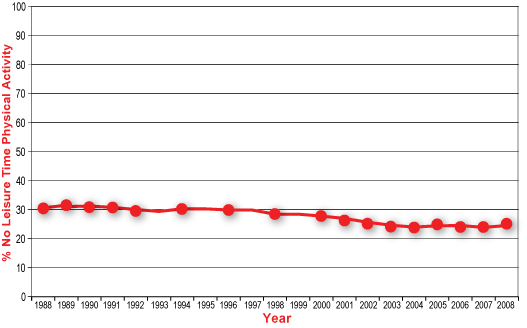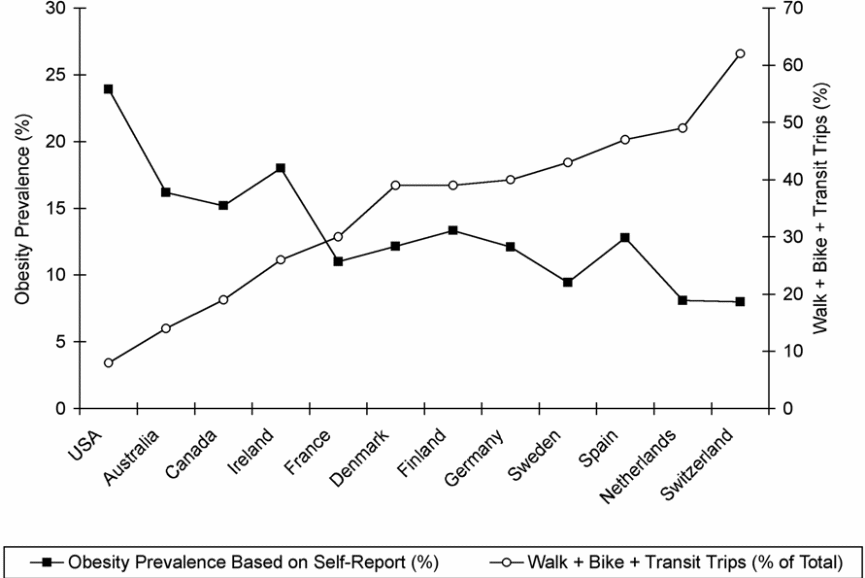Introduction
The rate of people reported of suffering from high blood pressure, heart diseases and diabetics at workplaces is growing at an alarming rate. Hospitals are spending a lot of money conducting research and developing medicine to cater for these problems. Everyday, organizations are reporting cases of employee absenteeism due to these problems. There has emerged the need for physical exercise even at workplaces. This may be in form of walking for a specific distance or number of minutes every day. It becomes difficult for people to undertake exercises without motivation. As a way of ensuring everybody has regularly taken exercises, there has been development of supporting devices such as pedometer. This is a device that counts steps taken by a person through detecting his or her hips motion. It is worn on the waist. The device is currently being used not only by physical exercise instructors but also by employees. Due to high demand for the product in the market, it will be imperative to look for the most viable means of distribution to ensure that every person have access to the device. Using a long channel in its distribution will result in the price of the product going high bearing in mind that its current marked price is already high. As a result, the producing company with opt for franchising technique in distributing the product. The company aims at liaising with various franchisees in different parts of the country to ensure that it has accessed the entire market in the country. The product will be sold at a price between $10 and $200 depending on the technology used in producing it. There are various macro-environment issues that affect production, distribution and usage of this device. This paper aims at analysing some of these forces.
Competitive forces
In analysing the competitive forces affecting this product, the paper aims at looking at the market size for the product and the size of competitors.
- According to a recent demographic study, it has been found that by the middle of the twenty-first century, most of the American population will comprise of persons aged above sixty five years. This is attributed to an increase in the rate of exercises done by the Americans as well as improvement in medical services (Poehlman 35).
- There has been an increase in need for physical exercise among the Americans with approximately 25% of the Americans taking physical exercises daily in form of walking, cycling or running (Poehlman pp. 36-52). This portion of the population comprises the user of pedometers.
- There is an increasing rate of changes in working environment with organizations emphasizing on need for exercises among employees. This is because they have understood that it is one way of enhancing their productivity. This is gradually increasing demand for pedometers in the country with workers continuously buying the device (Poehlman pp. 53-58).
The need for motivation to take exercises has led to development of different devices that helps in motivating people take their exercises daily. Apart from pedometers, there are other devices used during physical exercises. These include Timex, Garmin and accelerometer devices. Most of these devices are used to count the number of steps or speed at which a person is moving.
The ability of pedometers to measure different actions performed by a person as well as the heartbeat rate makes the product most favourite to attract wide market. With other physical exercises device not being able to measure different actions undertaken during physical exercise, there is a high possibility of pedometer gaining competitive advantage. However, the technology and materials required for production of the product makes it expensive. As a result, it has become unaffordable by the young generation which comprise the highest portion of people who go for physical exercises daily.
Regulatory (Political/Legal) Forces
In regulatory forces research, the paper aims at looking for various laws that govern production, distribution and sales of physical exercise equipments in America.
- There are laws that give organizations patent over production of specific equipments (Bassett, Pucher, Buehler, Dixie & Crouter pp. 795-800). This implies that no other company can manufacture, distribute or sell similar products without getting permission from the company with the patent.
- Companies that do not meet the set standards with respect to quality of equipments are denied the privilege to manufacture the equipments (Bassett et. al pp. 801-807).
- There are also regulations that govern distribution and selling price of products in case of organizations enjoying monopoly (Bassett et. al pp. 809-814). This is in bid to prevent such companies from exploiting the public.
From regulatory forces, it is clear that for production, sales and distribution of pedometers to be successful, the company responsible has to adhere to all established regulations with respect to quality of the device. Acquiring patent rights in its production would help the company overcome competition from other companies that are responsible of manufacturing physical exercise devices.
Economic Forces
In analysing economic forces, the paper aims at looking at the market segment with highest probability of using the product as well as the trend in its usage. The paper will also consider the factors that have led to pedometers not being effectively used in the country.
- There has been an increase in the rate at which young people are taking physical exercises (Dena 321).
- The rate of diabetics and heart attack cases in hospitals has led to doctors prescribing that people should regularly take physical exercises (Dena 323).
- With people needing to regularly monitor their trend of exercises, they have resulted to buying counting and recording devices such as the pedometer (Dena pp. 324-346).
- The available pedometers are sold at a price between $10 and $200 (Dena pp. 347-356). This makes it hard for the young generation to purchase the product.
Based on the findings, young generation comprise the biggest portion of potential users of the product. However, their inability to have regular income coupled with high cost of pedometer makes it hard for them to use the device. There is need for development of cheap pedometers. The old and people with chronic diseases have not been able to access the device. The fact that hospitals have started emphasizing on the need for physical exercises implies that demand for pedometer will go high in future.
Social Forces
In social forces, the paper intends to discuss the lifestyle trends in the country as well as the demographic trend and how it will affect usage of pedometer.
- There has been an increase in rate of physical exercises both at workplaces and at homes (Beighle, Pangrazi, & Vincent 213). People have started spending their leisure time doing physical exercises.
- Unlike in the past where people relied on vehicles to travel to workplaces, people living in close proximity to their workplaces are now opting to walk (Beighle, Pangrazi, & Vincent pp. 214-221).
- Organizations are continuously adjusting their working environment to accommodate for physical exercise among their employees (Beighle, Pangrazi, & Vincent 224).
- Physical exercise is being encouraged at schools (Beighle, Pangrazi, & Vincent pp. 225-234). Improvement in economic growth of the country has resulted to decrement in unemployment rate.
- Most of the people have regular income making it possible for them to cater for physical exercises (Beighle, Pangrazi, & Vincent 237).
- High rate of illnesses associated with physical exercises in America is leading to people taking exercises seriously (Beighle, Pangrazi, & Vincent pp. 239-242).
- With approximately seventy million people in America aging above sixty years, they require to have regular exercises for them to live a healthy life (Beighle, Pangrazi, & Vincent pp. 243-245). This means that they will need to regularly take a walk thus requiring a device to monitor their exercises.
The changing lifestyle at workplaces as well as homes coupled with the need by old generation to have regular exercises proves that there will be high demand for pedometer in future. As people understands that simple exercises such as taking a walk daily can protect them from getting coronary diseases as well as hear attacks, they are likely to increase their late of exercises. This means that need for pedometer and other devices used in physical exercises will be high.
Technological Forces
In analysis of the technological forces, the paper will look at contribution of technology in manufacturing the product and its future.
- The technology used in production of physical exercise devices comprise of software and a sensor (Tudor-Locke 54).
- There has been development of step counters that use microelectromechanical systems (MEMS) together with advanced software to detect and count the number of steps (Tudor-Locke pp. 58-63).
- This technology has helped in improving the accuracy of steps counts hence eliminating false positives (Tudor-Locke 95).
From the identified technological forces, it is clear that currently manufactured physical exercise devices are more accurate in recording the number of steps taken by a person or heartbeats. With this technology being available, it will be possible for the company to produce pedometers that will accurately record and count the steps or heartbeats of a person using it. Rate of production of the product will also be high as the company will not have to waste time researching on technology to use.
Conclusion
According to information obtained regarding macro-environment forces affecting production, distribution and sales of pedometers, it has been evident that there is an increase in number of people undertaking daily physical exercises in the country. Physical exercises are being encouraged even at workplaces leading to an increase in demand for physical exercise devices. With approximately 25% of the population taking physical exercises daily, the young generation comprise the biggest portion of the market segment for pedometers. Price of the product is one of the factors that may lead to it not being used by many people. Improvement in technology used in manufacturing the equipments has enhanced their accuracy as well as portability. Changing lifestyle among the people as well as at workplaces is leading to an increase in demand for physical exercise equipments. Currently, organizations are adjusting their working environment to accommodate for exercises. Establishment of laws governing production, distribution and sales of the equipments makes it possible for organizations to overcome competition.
Manufacture and sale of pedometers forms one of the most viable businesses to embark on. Availability of ready market coupled with technology for product manufacturing saves one from having to look for market and technology to use in their manufacture. The only problem that challenges the product is price. Its high production cost due to technology used means that the product can not be sold at a lower price. This makes it hard to exploit the young generation which comprise the largest portion of the market segment.
Works Cited
Bassett, David, Pucher, John, Buehler, Ralph, Dixie, Thompson. & Crouter, Scott. “Walking, Cycling, and Obesity Rates in Europe, North America, and Australia.” Journal of Physical Activity and Health, 5, (2008): 795-814.
Beighle, Amos, Pangrazi, Robert & Vincent, Stephen. “Article: Pedometers, Physical Activity, and Accountability.(encouraging healthy lifestyle habits in children).” The Journal of Physical Education, Recreation & Dance, 5.3, (2001): 213-245.
Dena, Bravata. “Using pedometer to increase physical activity and improve health.” The Journal of American Medical Association, 286.19, (2007): 321-356.
Poehlman, Eric. “Relation of age and physical exercise status on metabolic rate in younger and older healthy men.” Journals of Gerontology, 14.2, (1991): 34-56.
Tudor-Locke, Charles. Manpo-Kei: The art and science of step counting. Canada: Victoria, 2003.
Appendixes


